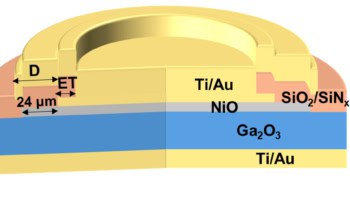
A technique for regulating the tempo of heartbeats with short flashes of light could lead to a less intrusive type of pacemaker, say researchers in the US. A team led by Andrew Rollins at Case Western Reserve University in Cleveland, US, has shown for the first time how the beating heart within the body of an embryonic quail can be synchronized with pulses of infrared laser light.
The door to such devices was opened in 2008 when extremely short femtosecond pulses from a Ti:sapphire laser were able to regulate the activity of small groups of cardiomyocytes, the specialized cells in cardiac muscle that contract in unison to create a heartbeat. Unfortunately, the price was possible damage to the cells in the process.
In the new research, Rollins’ group took its cue from a study showing how pulsed infrared light could influence a cell’s “action potential”, the name given to rapid changes in potential difference within a cell, which is thought to be the first step towards muscle contraction. These effects were seen at exposures well below the damage threshold.
Beating bird hearts
Stepping up the light source to a millisecond-pulsed infrared diode laser operating at a wavelength of 1.88 μm, the team carefully targeted a 0.3 mm2 area of the heart tube in a quail embryo. The heart in avian embryos begins beating after approximately 40 hours of incubation, so the Cleveland team used embryos at 53 and 59 hours of incubation whose hearts normally beat approximately once every 2 seconds. Light was delivered via a 400 μm diameter fibre, positioned 500 μm away from the embryo, and the heart tube was illuminated twice every second.
The result was synchronization between the laser pulse and the embryo’s heart rate, with each pulse inducing a heartbeat. Increasing the illumination frequency to 3 pulses a second caused the heart rate to follow suit, and when the laser was turned off the heartbeat dropped back to almost its original level. As long as the exposure intensity was kept below an upper threshold, which the team determined to be about 0.81 J cm–2, pacing was consistently successful with no subsequent signs of harm seen by electron microscopy.
Avian embryos are important models for the general study of cardiac growth and congenital defects, a topic where much remains unknown. That is because birds tend to have a relatively simple anatomy that develops rapidly, and there are still tight regulations controlling work on “live vertebrate animals”. A non-invasive way to control the heart rate would give researchers a means of manipulating the forces at work in the “looping” of a single heart tube into a four-chambered organ, and provide new methods of exploring what happens during the process.
Releasing action potential
However, the prospect of replacing electrical pacemakers in humans with laser-equipped equivalents is still a long way off, not least because the reasons why the laser produces the effect are unclear. The US team believes that it causes a thermal gradient, opening up ion channels and inducing action potentials under the right conditions. Whether that would still apply in the more opaque tissues of a human heart is not certain.
They believe that optical pacemakers could have advantages over the electrical variety. They would not need to be in physical contact with the heart, and so avoid the damage that the electrodes themselves can sometimes do to the organ they are assisting. Plus, the laser can be tightly focused on a particular area of interest.
The research is described in Nature Photonics.



